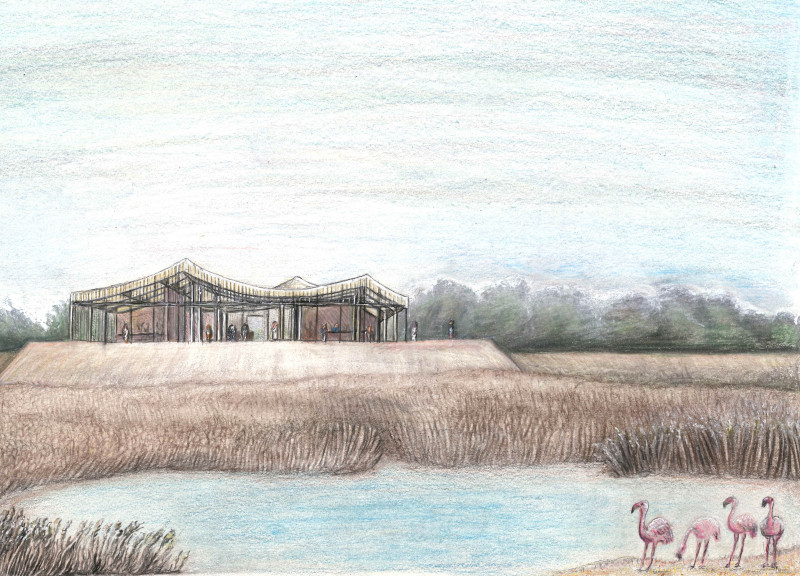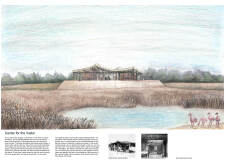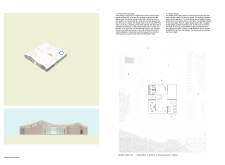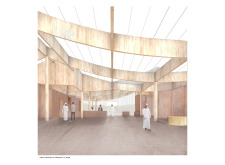5 key facts about this project
The Visitor Center at Al Wathba Wetlands is located in a crucial natural environment in the United Arab Emirates, acknowledged for its rich biodiversity, including seasonal visitors such as flamingos. The center enhances visitor interaction with the surrounding ecology by providing educational facilities designed to reflect local cultural heritage. The architectural concept is based on nomadic traditions, with a layout and structure that echo the historical ways of living in this region.
Architecture Concept
Inspired by the traditional tents used by the Bedouin people, the design features a square layout that is supported by round columns and topped with a sloping roof. This structure symbolizes the area’s nomadic history while also serving practical functions, allowing for light and air to flow through the space. The open plan encourages visitors to move freely, fostering a sense of community and interaction among them.
Facade Design
The facade is a modern take on the traditional palm huts, using palm-leaf sticks refined to create slender round cores. This design forms slats that provide shade while maintaining a visual relationship with the surrounding environment. Behind these slats, a glass facade with folding doors allows for easy movement between indoor and outdoor areas. This arrangement reduces the risk of birds colliding with the building and improves views of the wetlands.
Interior Elements
Inside, the center features large ceramic tiles in earth tones, showcasing imprints of local plants. This detail establishes a direct connection between the building and its natural surroundings. It offers visitors a visual representation of the region’s biodiversity. The design also incorporates elements from Arabesque art, ensuring that cultural context is an integral part of the interior experience.
Sustainability Measures
The construction methods used are carefully designed to have a minimal environmental impact. Prefabricated elements for the roof and walls enable efficient assembly on-site, limiting disruptions to the ecological landscape. Openings in the roof resemble Persian wind towers, encouraging natural ventilation and reducing dependence on mechanical cooling systems. This design choice reflects a commitment to sustainability.
Educational displays throughout the center provide insights into the Al Wathba Wetlands' ecology, promoting understanding and appreciation of the natural world. The building serves as a platform for storytelling, inviting visitors to engage with the landscape and its diverse inhabitants.






















































